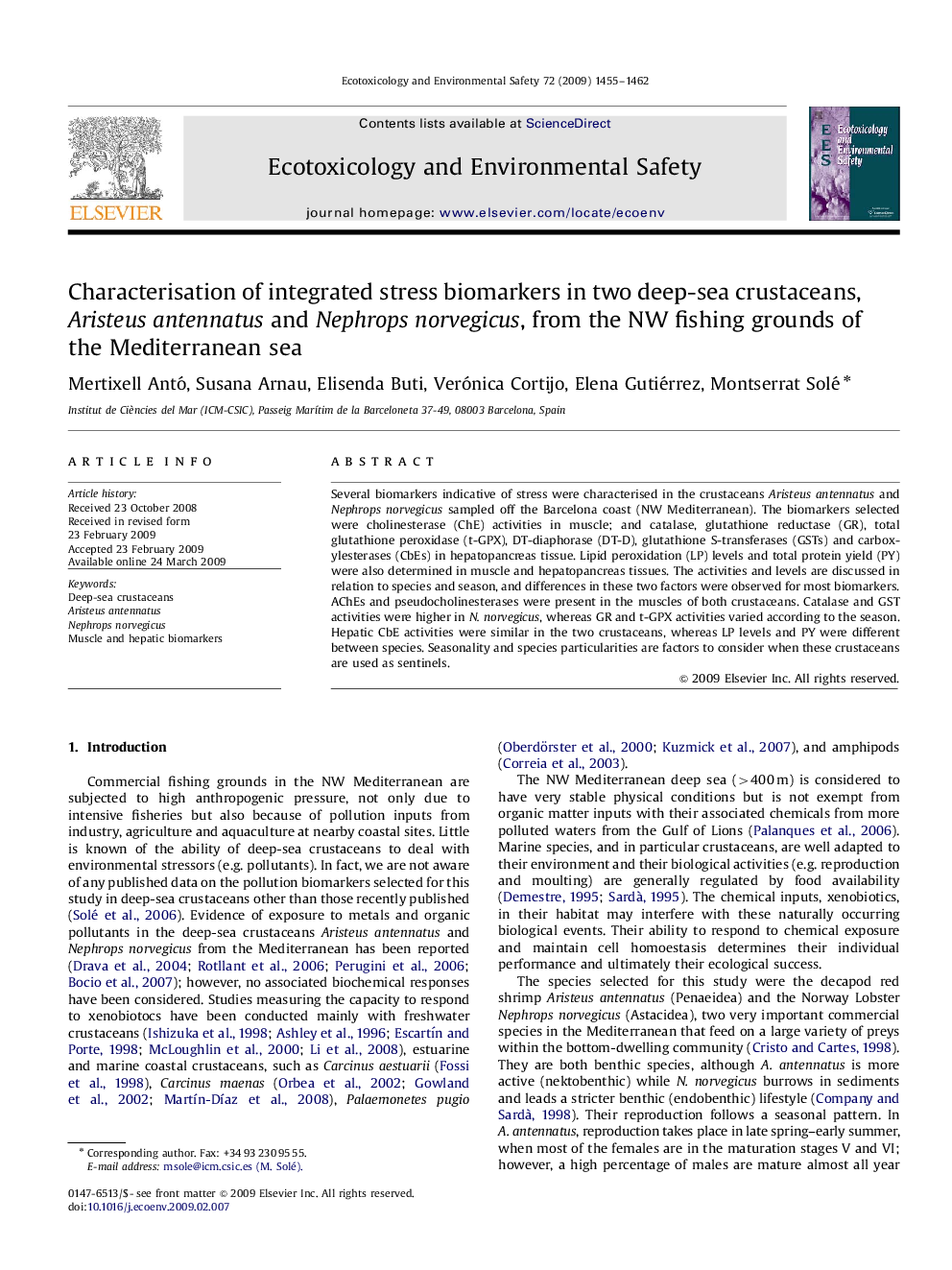| Article ID | Journal | Published Year | Pages | File Type |
|---|---|---|---|---|
| 4421766 | Ecotoxicology and Environmental Safety | 2009 | 8 Pages |
Abstract
Several biomarkers indicative of stress were characterised in the crustaceans Aristeus antennatus and Nephrops norvegicus sampled off the Barcelona coast (NW Mediterranean). The biomarkers selected were cholinesterase (ChE) activities in muscle; and catalase, glutathione reductase (GR), total glutathione peroxidase (t-GPX), DT-diaphorase (DT-D), glutathione S-transferases (GSTs) and carboxylesterases (CbEs) in hepatopancreas tissue. Lipid peroxidation (LP) levels and total protein yield (PY) were also determined in muscle and hepatopancreas tissues. The activities and levels are discussed in relation to species and season, and differences in these two factors were observed for most biomarkers. AChEs and pseudocholinesterases were present in the muscles of both crustaceans. Catalase and GST activities were higher in N. norvegicus, whereas GR and t-GPX activities varied according to the season. Hepatic CbE activities were similar in the two crustaceans, whereas LP levels and PY were different between species. Seasonality and species particularities are factors to consider when these crustaceans are used as sentinels.
Related Topics
Life Sciences
Environmental Science
Environmental Chemistry
Authors
Mertixell Antó, Susana Arnau, Elisenda Buti, Verónica Cortijo, Elena Gutiérrez, Montserrat Solé,
